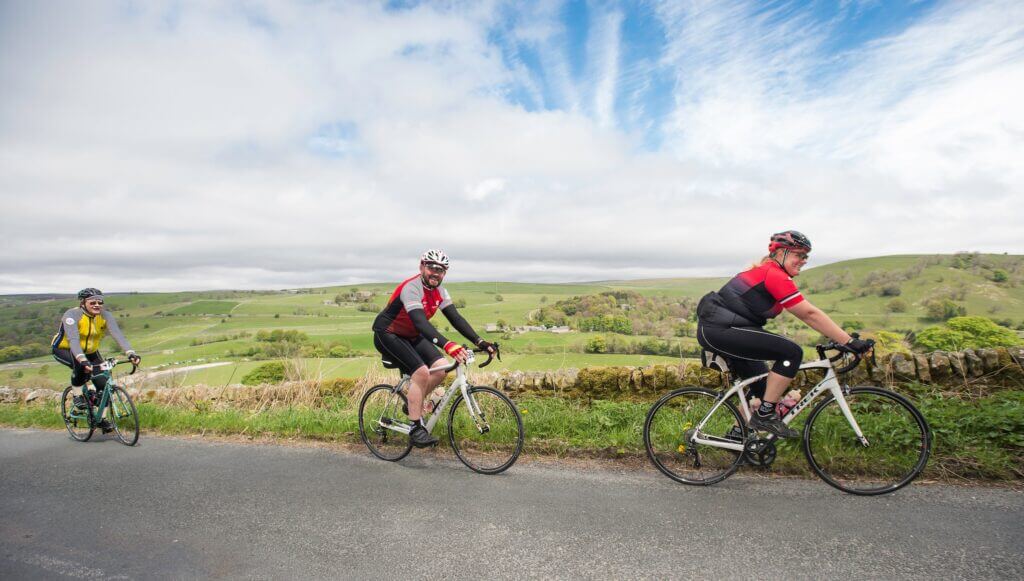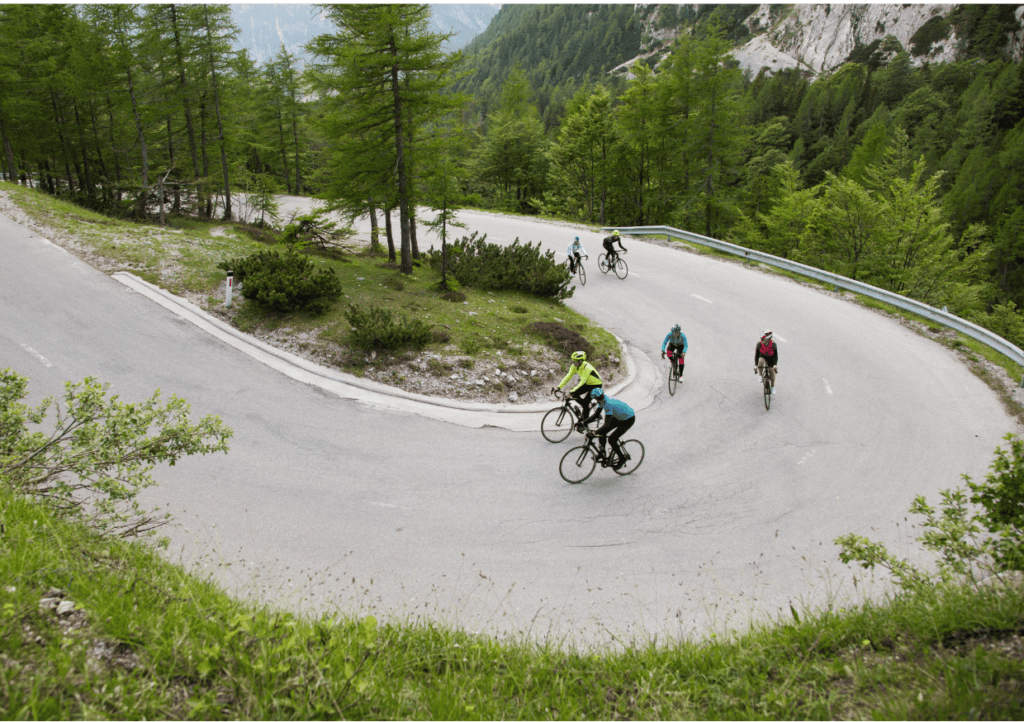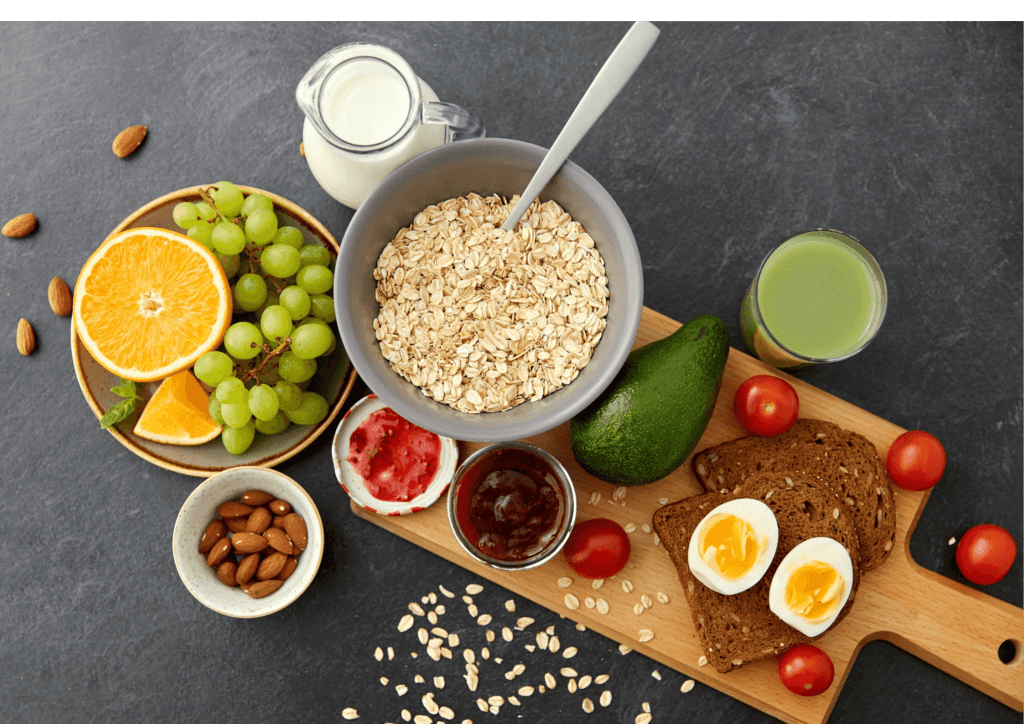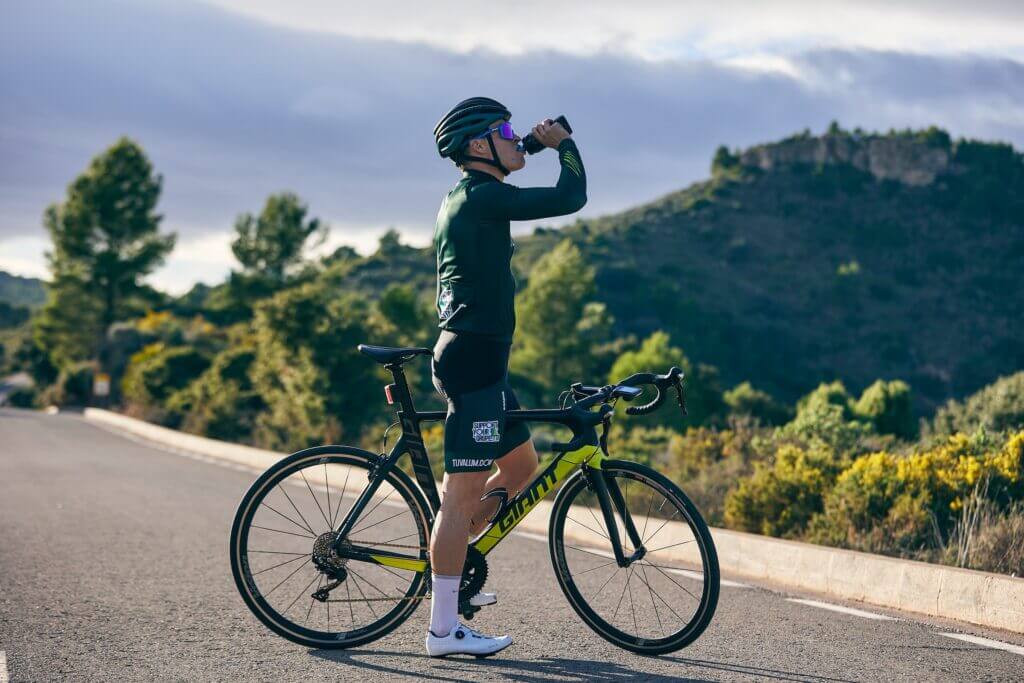Entering a sportive can feel overwhelming for anyone. The idea of taking on long distances and tough roads might seem like a big challenge.
But don’t worry, with the right training and preparation, you can have a great time and enjoy the day cycling. It’s not just about having a bike and determination – it’s about getting ready in the best way.
A sportive is a special kind of cycling event. While they aren’t races, they are usually timed. Some sportives can be quite fast-paced as participants aim to showcase their abilities and achieve good times.
However, the beauty of sportives lies in the fact that everyone can ride at their own pace, making them accessible and enjoyable for cyclists of all levels.
Picture this: you and a bunch of other cyclists gather at a starting point. There’s a buzz of excitement in the air. You’ll be cycling on scenic routes that have hills to climb and beautiful countryside to enjoy.
Sportives take place all over the world, and they’re a fantastic opportunity to travel and experience new scenery. You will be cycling through picturesque landscapes, discovering hidden gems, and challenging yourself in a whole new way.
This guide will help you understand everything you need to know. We’ll keep it simple and cover training, eating well, and getting ready in a way that sets you up for success. So let’s get started on your journey to conquer the sportive!

Cycling Training for Sportives
Preparing for a sportive is a journey that demands dedication, commitment, and a strategic training approach.
It’s not just about logging miles on your bike; it’s about understanding your body’s capabilities, progressively pushing your limits, and building the resilience needed to conquer the challenges that lie ahead.
Building a Strong Foundation
At the heart of your sportive training lies the concept of building a strong foundation. Base training sets the stage for your entire preparation.
It’s about developing endurance, improving your aerobic capacity, and establishing a solid fitness baseline. Begin by embarking on moderately paced rides that form the groundwork for your sportive journey.
Start your training with a series of steady-paced rides. These rides should be comfortable and sustainable, focusing on building your cardiovascular fitness.
Gradually increase your ride durations over time to condition your body for the longer distances you’ll face in the sportive.
The Importance of Endurance Rides
Endurance rides may not have the intensity of interval sessions, but they play a pivotal role in your overall training strategy. These rides teach your body to maintain a steady effort over extended periods, which is essential for the endurance demands of a sportive.
By gradually increasing the duration of these rides, you’re conditioning your muscles and cardiovascular system to sustain effort. Dedicate a significant portion of your training to endurance rides, often referred to as Zone 2 training.
These rides should be comfortable enough to hold a conversation while pedaling, indicating that you’re in an aerobic zone where your body predominantly uses oxygen to produce energy.
This type of training enhances your cardiovascular fitness, increases your aerobic capacity, and trains your body to efficiently utilize fat for energy.
Focus on smooth pedaling technique and maintaining a consistent pace during your Zone 2 rides. This steady effort not only builds your endurance foundation but also helps improve your overall riding efficiency.
As you progress, aim to increase your ride durations progressively, allowing your body to adapt to longer efforts and strengthening your ability to maintain a sustainable pace throughout the entirety of the sportive.
When engaging in Zone 2 training, consider choosing a flattish route that allows you to maintain a constant effort. This type of terrain minimizes the impact of hills and varying gradients, allowing you to focus on your heart rate and rhythm without interruptions.

Incorporating Interval Training
Once you’ve established a foundation, it’s time to introduce progressive training techniques that will elevate your cycling performance. Interval training takes center stage here, as it simulates the surges, sprints, and varied efforts you’ll encounter during a sportive.
Interval training is a game-changer in sportive preparation. It involves alternating between high-intensity efforts and recovery periods.
This type of training enhances your body’s ability to handle changes in pace, replicating the dynamic nature of a sportive. Over time, interval sessions increase your anaerobic capacity, improve your VO2 max, and make you a more versatile cyclist.
Incorporate interval sessions into your training plan about 1-2 times per week. Start with shorter intervals, such as 30 seconds of high-intensity pedaling followed by 1-2 minutes of recovery.
Gradually increase the duration and intensity of intervals as your fitness improves. Intervals can be performed on flat terrain or inclines, mimicking different sportive conditions.
Hill Repeats and Climbing Practice
No sportive is complete without its fair share of hills and climbs. To conquer these challenges, you need to integrate hill repeats, climbing practice, and even strength training into your training regimen.
Hill repeats, in particular, are a potent tool for building strength, mental fortitude, and confidence on ascents.
Find a hill or incline near you that challenges you but is manageable. Perform a series of hill repeats, where you climb the hill at a higher intensity and descend to recover.
Start with a few repeats and gradually increase the number over time. Focus on maintaining a steady cadence and controlled effort during the climb.
Strength training, including exercises like squats, lunges, and leg presses, can significantly enhance your hill-climbing abilities.
By building stronger leg muscles, you’ll be better equipped to tackle steep inclines and power through challenging sections of the sportive course. Aim for one to two sessions per week to complement your cycling workouts.

Simulating A Sportive
To prepare effectively, it’s important to simulate the conditions you’ll encounter during the sportive. This involves more than just physical training—it’s about mentally acclimating to the event’s demands.
Extended ride simulations replicate the length and conditions of the sportive itself. These rides serve as dress rehearsals, allowing you to refine your pacing, nutrition strategies, and mental approach.
It’s also a golden opportunity to practice your entire sportive routine, including getting your bike and gear ready for the challenge ahead.
In a typical sportive, distances can range from around 40 miles (64 km) to well over 100 miles (160+ km), depending on the event.
Gradually increase the distances of your training rides to align with the sportive’s length, while also incorporating elevation changes and terrain diversity.
Choose routes that closely match the characteristics of the sportive course. During extended ride simulations, practice pacing yourself for the duration of the event.
Experiment with different nutrition and hydration strategies to identify what works best for you. Use these simulations to build confidence and mental resilience.
Group Riding Dynamics
Many sportives involve riding in groups or pelotons. Learning to navigate group dynamics is a skill that can enhance your experience and performance.
Group riding offers drafting benefits, energy conservation, and a sense of camaraderie that can boost motivation.
Join local group rides to improve your group riding skills. Practice riding in a paceline, taking turns at the front to share the workload.
Learn to communicate with hand signals and verbal cues. Remember, safety is paramount, maintain a safe distance and be aware of other riders’ actions.

Researching Your Sportive Event
Before embarking for your sportive event, taking the time to research the event can greatly enhance your overall experience. Delving into the details of the route, amenities, and potential challenges can equip you with the knowledge needed for a successful and enjoyable ride.
Begin by thoroughly examining the route of the sportive. Pay close attention to the distance and elevation profile. Understanding the amount of climbing involved and the overall terrain will help you mentally prepare and adapt your training accordingly.
Dig deeper into the event’s logistics. How many feed stations are provided along the route? These stations offer essential nourishment, so knowing their locations is vital for fueling your ride. Consider whether mechanical support is offered during the event, and if there’s an after-event or prize-giving session once the sportive is over.
In some cases, the route might not be clearly marked with signs. To prevent confusion, consider uploading the route onto your bike computer or GPS device. This way, you’ll have a reliable guide to follow and can avoid any unplanned detours.
While event support is valuable, it’s wise to be self-sufficient as well. Weather conditions can change, so pack arm/leg warmers and a waterproof jacket. Ensure you have enough food and drink to sustain you throughout the ride.
Mechanical issues can still arise, even with event support. Punctures are a common challenge, so carrying spare inner tubes, tyre levers, and a pump is essential. A multi-tool comes in handy for any on-the-go adjustments that might be needed.
By dedicating time to researching your chosen sportive event, you will have a clear understanding of the route, amenities, and your own preparedness. This will leave you ready to tackle the challenge and make the most of your sportive experience.

Sportive Nutrition for Cyclists
As you embark on your sportive journey, it’s crucial to recognize that your physical and mental well-being are the cornerstones of success.
Fitness, health, and nutrition form a triad of essential elements that not only optimize your performance but also ensure your enjoyment of the sportive experience.
From fueling your body with the right nutrients to prioritizing recovery and overall well-being, this section is dedicated to equipping you with the tools needed to achieve peak condition.
Fueling Your Performance
Nutrition serves as the backbone of your sportive preparation. Proper fueling ensures that your body has the energy to sustain long efforts and endure the physical demands of the event.
It’s not just about eating; it’s about consuming the right nutrients in the right quantities to power your cycling endeavors.
Carbohydrates, proteins, and healthy fats are your nutritional allies. Carbs are your body’s primary source of energy, making them vital for endurance rides.
Proteins aid in muscle repair and recovery, while fats provide sustained energy. A balanced diet that incorporates these elements ensures your body’s optimum functioning.
Create a balanced meal plan that includes a mix of carbohydrates, lean proteins, and healthy fats.
Whole grains, fruits, vegetables, lean meats, fish, nuts, and seeds should be staples in your diet. Prioritize complex carbohydrates for sustained energy release.

Pre-Ride Fueling Strategies
The meal you consume before a sportive significantly influences your performance. A meal rich in easily digestible carbohydrates, consumed a few hours before the event, replenishes glycogen stores in your muscles and provides readily available energy.
Consider including foods like oatmeal, whole-grain toast, or fruits in your pre-ride meal.
Aim to consume your pre-ride meal 2-3 hours before the event. Choose foods that you’re familiar with and that have been well-tolerated during training. Avoid heavy or high-fat meals that may cause discomfort during the ride.
Hydration for Optimal Output
Staying properly hydrated isn’t just about avoiding dehydration—it’s a critical factor in optimizing your cycling performance.
Adequate hydration supports your body’s cooling mechanisms, nutrient transportation, and overall stamina.
Water is the foundation of your body’s functions. Dehydration can lead to reduced endurance, cramping, and fatigue.
Proper hydration ensures that your cardiovascular system can efficiently deliver oxygen and nutrients to your muscles, enabling you to perform at your best.
Start hydrating well before the ride. Aim to drink water throughout the day and incorporate electrolyte-rich beverages, especially during longer rides.
Monitor the color of your urine—a pale yellow color indicates good hydration.

Rest and Recovery
Rest and recovery are often overlooked aspects of sportive preparation, yet they’re instrumental in ensuring your body’s ability to adapt and perform at its peak.
Without proper recovery, your training efforts can be compromised, leading to decreased performance and increased risk of injury.
Importance of Sleep
Sleep is a cornerstone of recovery. During deep sleep, your body releases growth hormone, which aids in muscle repair and overall recuperation.
Prioritize 7-9 hours of quality sleep each night to support your training efforts and promote optimal recovery. Establish a sleep routine by going to bed and waking up at consistent times everyday.
Create a sleep-conducive environment by keeping the room dark, quiet, and at a comfortable temperature. Limit screen time before bed to ensure a restful night’s sleep.
Active Recovery Techniques
Active recovery involves low-intensity activities that promote blood circulation, muscle relaxation, and overall rejuvenation.
Engaging in gentle rides, yoga, or light stretching can help flush out metabolic waste, reduce post-ride muscle soreness, and facilitate recovery.

